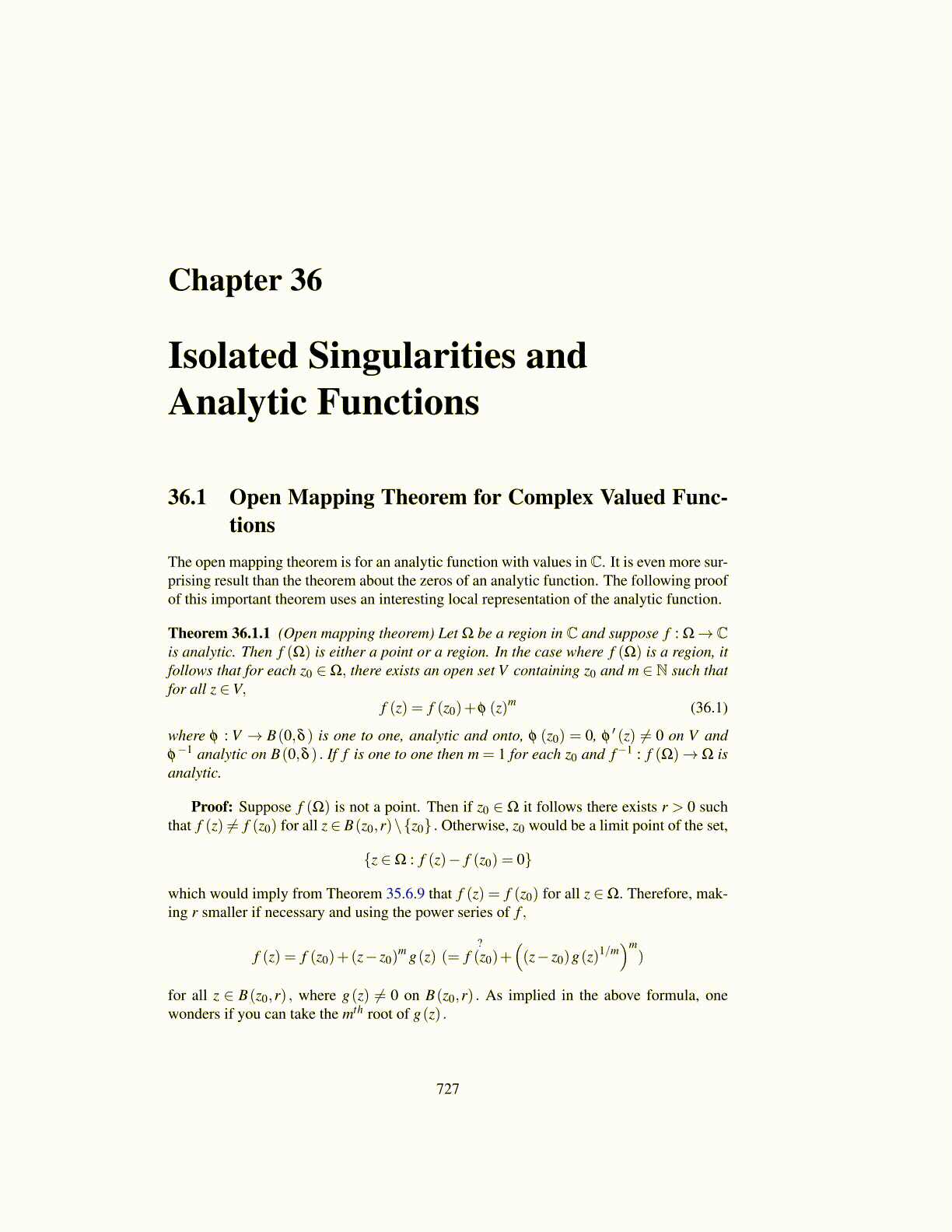
Chapter 36
Isolated Singularities andAnalytic Functions
36.1 Open Mapping Theorem for Complex Valued Func-tions
The open mapping theorem is for an analytic function with values in C. It is even more sur-prising result than the theorem about the zeros of an analytic function. The following proofof this important theorem uses an interesting local representation of the analytic function.
Theorem 36.1.1 (Open mapping theorem) Let Ω be a region in C and suppose f : Ω→ Cis analytic. Then f (Ω) is either a point or a region. In the case where f (Ω) is a region, itfollows that for each z0 ∈Ω, there exists an open set V containing z0 and m ∈ N such thatfor all z ∈V,
f (z) = f (z0)+φ (z)m (36.1)
where φ : V → B(0,δ ) is one to one, analytic and onto, φ (z0) = 0, φ′ (z) ̸= 0 on V and
φ−1 analytic on B(0,δ ) . If f is one to one then m = 1 for each z0 and f−1 : f (Ω)→Ω is
analytic.
Proof: Suppose f (Ω) is not a point. Then if z0 ∈ Ω it follows there exists r > 0 suchthat f (z) ̸= f (z0) for all z ∈ B(z0,r)\{z0} . Otherwise, z0 would be a limit point of the set,
{z ∈Ω : f (z)− f (z0) = 0}
which would imply from Theorem 35.6.9 that f (z) = f (z0) for all z ∈Ω. Therefore, mak-ing r smaller if necessary and using the power series of f ,
f (z) = f (z0)+(z− z0)m g(z) (
?= f (z0)+
((z− z0)g(z)1/m
)m)
for all z ∈ B(z0,r) , where g(z) ̸= 0 on B(z0,r) . As implied in the above formula, onewonders if you can take the mth root of g(z) .
727